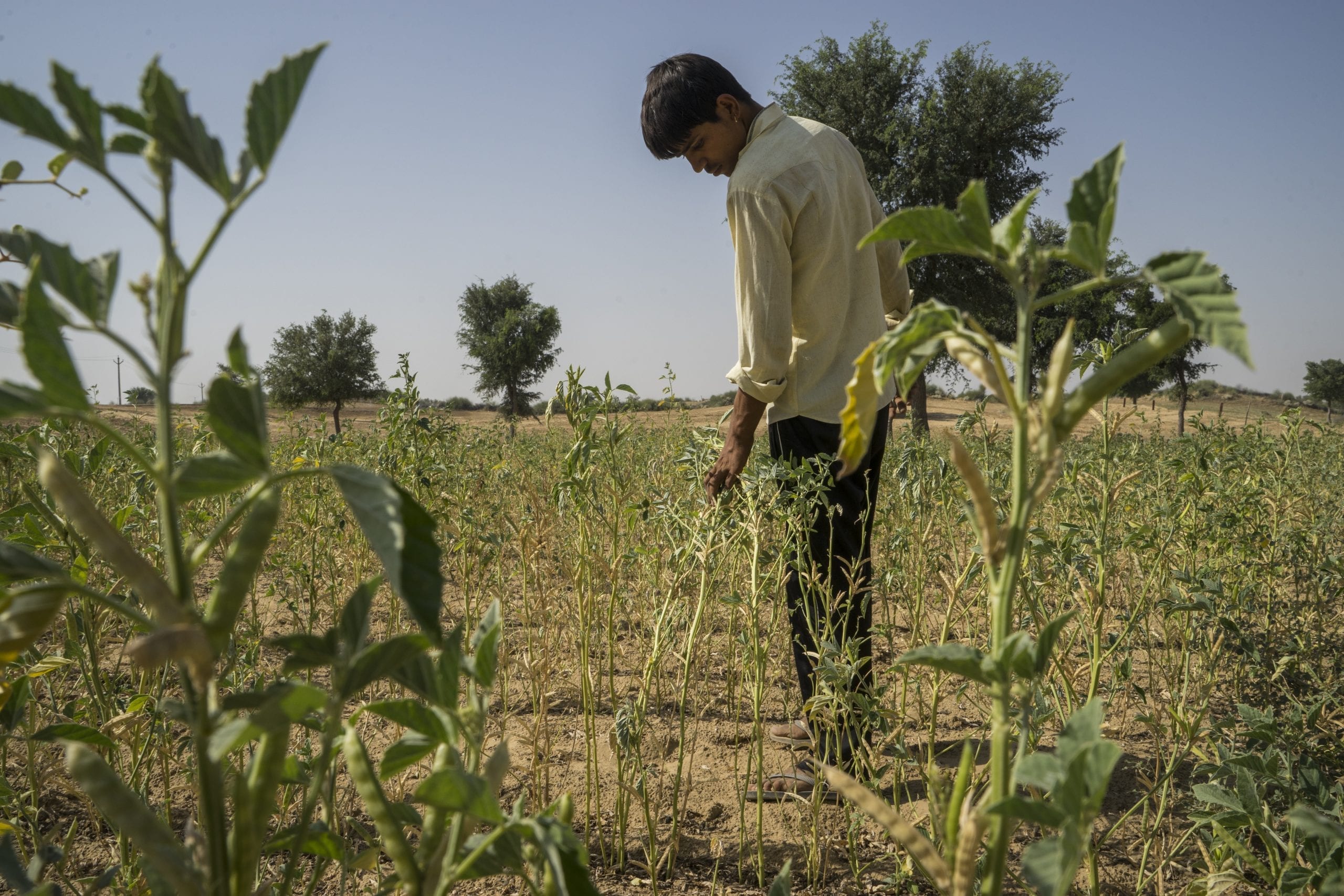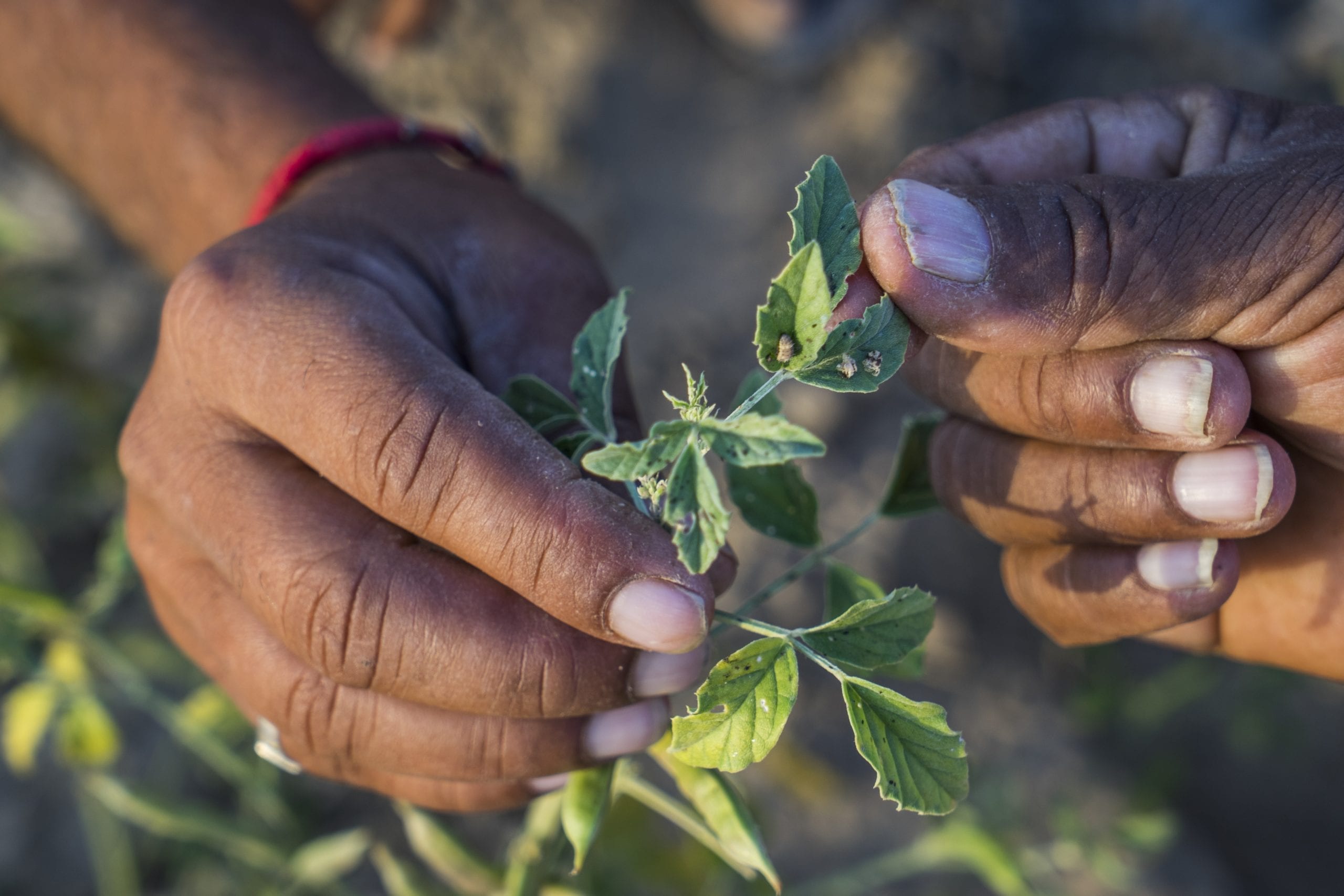What’s Next for Agriculture in India?
India’s agricultural sector is projected to see a significant reduction in supply, demand, and value because of the COVID-19 pandemic. TechnoServe India Fellow Amy Yang and India Country Director Punit Gupta discuss how we can safeguard farmers through it.

Editor’s Note: This article was originally published on India Development Review and can be viewed here.
As a result of the rapid spread of COVID-19, global and domestic economies have taken a hit due to the lockdown of economic activities. GDP forecasts for 2020 have been revised downwards, from roughly 3% to -3% globally, and from roughly 6% to 2% in India.
Within the country, the government implemented a nationwide lockdown from March 25 to contain COVID-19’s spread. While some sources predict a rapid recovery starting in 2021, we expect a much longer downturn, lasting 18-24 months, driven by the need for an interim stop-start economy. In general, three main post-lockdown scenarios are possible, each with different economic implications:
1. Containment by September 2020: This is the best-case scenario, where COVID-19 is contained through a scientific breakthrough such as the development of a vaccine or scalable treatment, and we experience a sharp drop and quick resurgence in economic activity.
2. Stop-start containment until March 2021: This is the most likely scenario, in which India’s economy is selectively opened, and re-closed periodically to contain the spread. Similar to the containment scenario, the pandemic will be resolved through a scientific breakthrough, but this breakthrough does not emerge before December 2020 (or later). Here, India is expected to see an extended period of dampened economic activity before recovery.
3. No containment until 2023-2024: This is the worst-case scenario, which assumes that no scientific breakthrough is established in the medium-term, and no further containment measures are taken. The pandemic’s resolution relies exclusively on herd immunity (via contraction and recovery) and implies a long economic downturn (until 2024 at least) and high mortality count.
Through all of these scenarios, agricultural crop production is an essential business and is expected to continue operations. However, producers will face heightened challenges, including reduced demand, supply chain disruptions, lower availability of farm labour, and price volatility leading to stressed farmer economics. Although the government has launched interventions to reinforce food security, relief efforts to date are insufficient.
Additional support is needed to bolster the livelihoods of agricultural workers, who make up 58% of India’s population. We anticipate farming households producing high-value cash crops such as fruits and vegetables to require the greatest support, as these crops tend to be highly perishable, and therefore, more vulnerable to supply chain disruptions and reduced demand.
To identify appropriate agricultural interventions, TechnoServe — the international nonprofit where we work — conducted a 24-month projection to assess COVID-19’s impact on agricultural supply, demand, price, value, and farmer income. Forecasts were performed for more than 160 crops across fruits, vegetables, cereals, pulses, oilseeds, fibres, spices, plantation crops, and floriculture. These forecasts provide directional insight on specific crop categories and geographies that are likely to experience the greatest adverse impact due to COVID-19.
Under a stop-start containment and U-shaped recovery (scenario two), India’s agricultural sector is projected to see a significant reduction in supply, demand, and value that persists through 2022.

Supply-Side Disruptions
Aggregate crop supply is expected to decline by 470 million metric tons between 2020 and 2022, with an 11% decline versus baseline projections in 2020, a 9% decline in 2021, and a 6% decline in 2022. This decline will be driven by:
- Supply chain disruptions, including reduced transportation and storage capacity
- Stressed farmer economics due to reduced household income and a potential increase in the cost of inputs (which will impact production capacity in upcoming seasons)
- Reduced availability of migrant farm labour, particularly as workers move away from key agricultural states such as Uttar Pradesh, Madhya Pradesh, Haryana, Punjab, and Rajasthan, to weather out COVID-19 in their home villages
Although the government is currently focused on staple crops, we anticipate cash crops to experience a greater percentage decrease in output — particularly floriculture, fruits, oilseeds, and vegetables — which together contribute to roughly 45% of total crop value. These crop categories tend to be more perishable and are, therefore, particularly vulnerable to COVID-19 induced supply chain disruptions.
Decline in Demand
Aggregate crop demand is expected to decline by 580 million metric tons between 2020 and 2022, with a 12% decline versus baseline projections in 2020, an 11% decline in 2021, and an 8% decline in 2022. This decline will be driven by:
- Reductions in overall domestic demand due to lowered household income and focus on necessities
- Reductions in global demand, translating to reduced exports
- Reductions in processing demand due to disruption in operations
Crop categories projected to experience the greatest percentage decrease in demand are floriculture (40% decline), fruits (30% decline), and vegetables (30% decline), as these categories consist largely of premium or luxury crops. On the other hand, staple crops (such as cereals, pulses, fibres, and some oilseeds) are projected to see a slight increase in demand, as these crops tend to exhibit negative income elasticities (that is, their consumption increases with a fall in income).
Changes in Demand and Supply Will Increase Price Volatility
Farm gate prices for crops will face significant volatility due to changing supply and demand dynamics. Crop categories we anticipate will experience the greatest price decrease are spices (30% decline) and vegetables (20% decline), as the drop in demand is projected to be greater than the drop in supply. Conversely, pulses, oilseeds, plantation crops, cereals, and fibres are expected to experience a price increase due to a combination of decreased supply and increased demand.
Aggregate crop value, computed as the product of projected supply and price, is estimated to decline by INR 4.4 lakh crores between 2020 and 2022, with a 15% decline versus baseline projections in 2020, a 14% decline in 2021, and an 11% decline in 2022. The greatest value decrease is expected in fruits and vegetables, with an INR 0.6 lakh crore reduction in each category due to reduced prices and output. Plantation crops such as cocoa, coffee, tobacco, cotton, and so on, are projected to drive an additional INR 0.2 lakh crore value loss because of their significant contribution to agricultural value.
From a geographical perspective, Uttar Pradesh, Rajasthan, Maharashtra, Karnataka, Madhya Pradesh, Gujarat, and Andhra Pradesh are expected to experience the greatest value loss, due to their projected value decline (12-22%) and significant contribution to India’s total agricultural output value (roughly 60% of total domestic value).
As such, we recommend that interventions target the intersection of vulnerable crop categories (fruits, vegetables, plantation crops) and geographies (the states mentioned above), which would account for 55% of the projected value loss and cover approximately 17 million farming households.
How Can We Safeguard Farmers Through This?
Across India, the COVID-19 induced slowdown will place stress on farmer economics and is expected to lower farmer household incomes by an average of 33%. The 17 million farming households identified in focus clusters will face disproportionate impact: We anticipate an aggregate household income reduction by 80% versus baseline levels.
The worsening of farmer economics will have several adverse impacts. Additionally, farming households will be pushed into poverty and face heightened issues of food security and nutritional balance. Moreover, farmers will have difficulty producing crops in upcoming harvest seasons, which will dampen agricultural growth in the medium-term.
To reduce value loss and safeguard farmer economics, we need collaboration between with different stakeholders, including farmer producer organisations (FPOs), government, nonprofits, and agribusinesses, across four key interventions:
1. Minimising supply chain disruptions by:
- Ensuring continued access to harvest equipment, transportation, and storage
- Providing government support to circumvent local lockdowns over the next 24 months
- Leveraging technology for coordination with farmers on local conditions
- Keeping wholesale markets open
- Using alternate channels, such as NeML and eNam to address institutional buyers, and online platforms to reach consumers
- Signing contract farming arrangements where possible
- Aggregating input requirements and ensuring critical inputs reach farmers on time
- Facilitating capital flow to FPOs
- Supporting farmers on crop planning in a volatile demand environment
2. Bolstering demand for agricultural produce by:
- Ensuring food processing industries are allowed to work even during local lockdown conditions
- Reducing or eliminating taxes and levies on cash crops
- Providing increased export subsidies for high-value crops or derivatives
- Supporting Public-Private Partnerships for Integrated Agriculture Development (PPP-IAD)
3. Managing price volatility of agricultural produce by:
- Implementing a price stabilisation mechanism backed by a cross-commodity fund
- Listing additional commodities and share price information on exchanges
- Helping farmers smooth price volatility through innovative price stabilisation mechanisms
- Provisioning hermetic storage solutions to farmers and FPOs for high-value crops
4. Working with farmers to improve household income and access government COVID-19 schemes by:
- Providing targeted stimulus (for example, direct benefit transfers) to farming households facing the greatest adverse impact
- Supporting farmer access to collateral-free loans for self-help groups
- Helping farmers start backyard cultivation of kitchen gardens to meet household food and nutrition needs
- Working with farming communities to help them understand and access schemes
- Working with local district administration to disburse scheme proceeds




